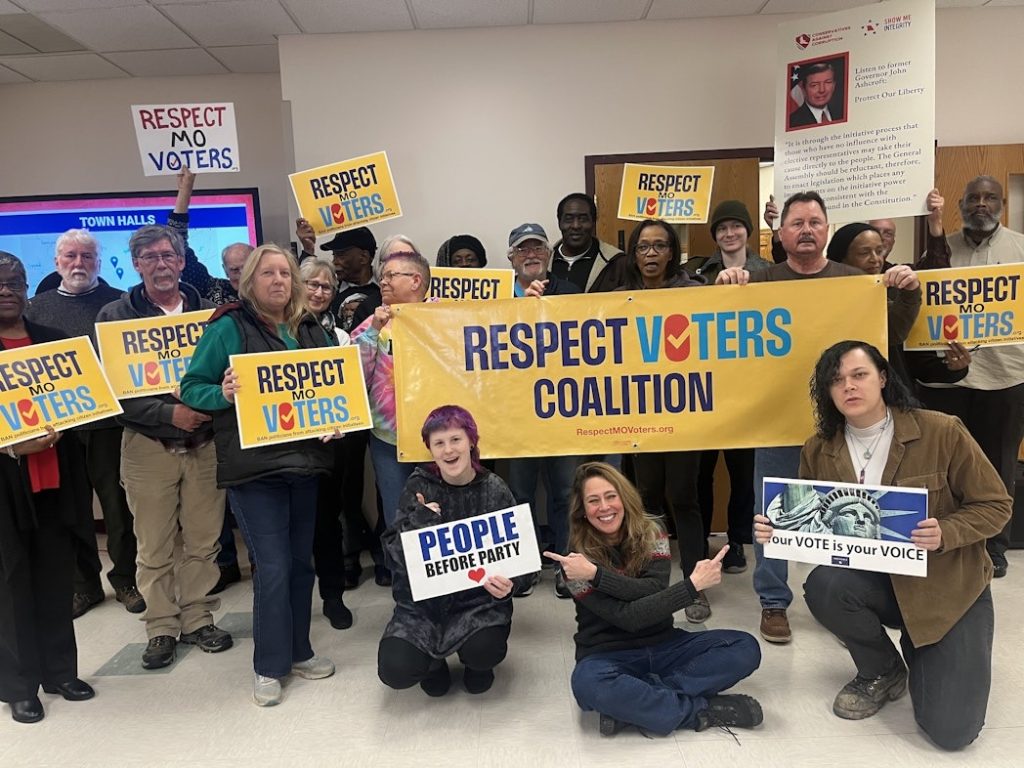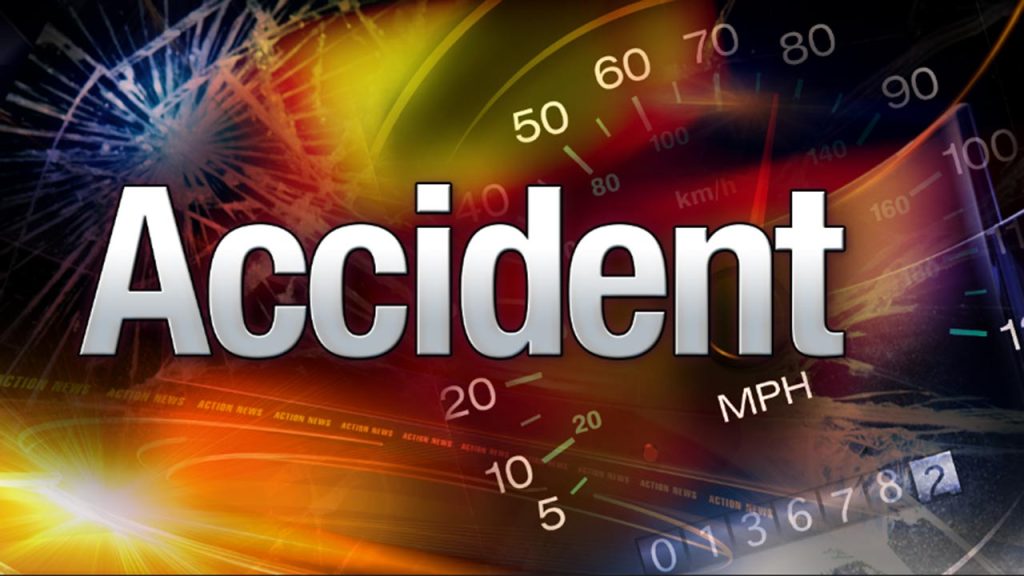Wallethub Lists Missouri As #28 For “Best State To Live In” Despite Being 4th Most Affordable State
For what it’s worth, the personal finance website WalletHub.com put together a study using 51 key indicators of livability to come up with its list of the best states to live in.
Those indicators ranged from affordability, the economy, education and health, quality of life and safety.
And when the final numbers were crunched together, Missouri ranked 28th despite being the 4th most affordable state to live in.
The worst states to live in, according to WalletHub, are Arkansas, Louisiana and New Mexico while best state states to live in are New Jersey, Idaho and, despite being the 44th most expensive state to live in…Massachusetts.
Full Report:
Deciding on a place to call home can be a tough process. You’ll need to balance things like the cost of living with job opportunities, quality of education and safety. Personal preference also comes into the equation, as you’ll want to live somewhere with the types of attractions, recreational opportunities and weather that suit you. Luckily, there’s 50 states to choose from, from frigid Alaska to sunny Florida. Each has its own benefits and drawbacks.
If you do the math, some states clearly outshine others in various categories. To find out the best states to live in, WalletHub compared the 50 states based on 51 key indicators of livability. They range from housing costs and income growth to the education rate and quality of hospitals.
Top 5 States to Live In
1. Massachusetts
2. Idaho
3. New Jersey
4. Wisconsin
5. Minnesota
Main Findings
Top States to Live in
| Overall Rank | State | Total Score | Affordability Rank | Economy Rank | Education & Health Rank | Quality of Life Rank | Safety Rank |
| 1 | Massachusetts | 60.23 | 44 | 9 | 1 | 6 | 6 |
| 2 | Idaho | 60.19 | 11 | 7 | 21 | 24 | 4 |
| 3 | New Jersey | 59.81 | 48 | 25 | 6 | 7 | 1 |
| 4 | Wisconsin | 59.66 | 30 | 12 | 9 | 12 | 8 |
| 5 | Minnesota | 58.69 | 14 | 29 | 5 | 10 | 19 |
| 6 | Florida | 58.51 | 32 | 11 | 26 | 4 | 12 |
| 7 | New Hampshire | 58.21 | 40 | 3 | 7 | 36 | 3 |
| 8 | Utah | 57.94 | 6 | 19 | 2 | 29 | 23 |
| 9 | New York | 57.94 | 47 | 23 | 15 | 1 | 7 |
| 10 | Pennsylvania | 57.90 | 29 | 35 | 17 | 5 | 11 |
| 11 | Wyoming | 57.90 | 13 | 22 | 30 | 38 | 2 |
| 12 | Iowa | 56.23 | 22 | 30 | 20 | 17 | 15 |
| 13 | Maine | 56.21 | 35 | 8 | 11 | 26 | 10 |
| 14 | Virginia | 56.18 | 15 | 17 | 16 | 21 | 18 |
| 15 | Montana | 55.21 | 27 | 2 | 12 | 33 | 37 |
| 16 | North Dakota | 54.63 | 31 | 5 | 18 | 37 | 27 |
| 17 | Illinois | 54.60 | 37 | 47 | 25 | 3 | 9 |
| 18 | South Dakota | 54.12 | 21 | 6 | 34 | 41 | 16 |
| 19 | Colorado | 53.58 | 28 | 15 | 3 | 11 | 47 |
| 20 | Nebraska | 52.89 | 33 | 28 | 13 | 27 | 29 |
| 21 | Vermont | 52.71 | 42 | 1 | 8 | 45 | 31 |
| 22 | North Carolina | 52.32 | 17 | 16 | 35 | 16 | 35 |
| 23 | Kansas | 52.20 | 26 | 27 | 27 | 18 | 32 |
| 24 | Connecticut | 52.09 | 46 | 36 | 4 | 23 | 13 |
| 25 | Rhode Island | 52.05 | 45 | 14 | 22 | 44 | 5 |
| 26 | Ohio | 51.61 | 23 | 45 | 29 | 15 | 22 |
| 27 | Georgia | 51.59 | 18 | 24 | 41 | 19 | 21 |
| 28 | Missouri | 51.23 | 4 | 21 | 37 | 28 | 36 |
| 29 | Indiana | 51.17 | 3 | 48 | 33 | 20 | 24 |
| 30 | Michigan | 51.07 | 12 | 46 | 31 | 13 | 33 |
| 30 | Arizona | 51.01 | 24 | 18 | 32 | 25 | 34 |
| 32 | California | 50.49 | 50 | 20 | 23 | 2 | 42 |
| 33 | Delaware | 50.03 | 19 | 34 | 28 | 47 | 28 |
| 34 | Maryland | 49.79 | 38 | 37 | 19 | 31 | 30 |
| 35 | Hawaii | 49.38 | 49 | 13 | 10 | 42 | 26 |
| 36 | Washington | 49.17 | 36 | 10 | 14 | 8 | 50 |
| 37 | Kentucky | 47.53 | 10 | 49 | 38 | 46 | 20 |
| 38 | Texas | 47.21 | 34 | 40 | 40 | 9 | 38 |
| 39 | Oregon | 47.20 | 41 | 31 | 24 | 14 | 48 |
| 40 | Tennessee | 47.02 | 7 | 26 | 43 | 35 | 43 |
| 41 | Alabama | 47.01 | 1 | 42 | 46 | 39 | 25 |
| 42 | West Virginia | 47.00 | 2 | 38 | 47 | 43 | 17 |
| 43 | Oklahoma | 46.34 | 16 | 32 | 44 | 32 | 39 |
| 44 | South Carolina | 45.65 | 9 | 39 | 42 | 34 | 46 |
| 45 | Nevada | 44.61 | 39 | 44 | 39 | 22 | 41 |
| 46 | Alaska | 44.17 | 43 | 4 | 36 | 50 | 44 |
| 47 | Mississippi | 43.53 | 8 | 43 | 50 | 49 | 14 |
| 48 | Arkansas | 42.07 | 5 | 41 | 45 | 48 | 45 |
| 49 | Louisiana | 40.57 | 20 | 50 | 49 | 40 | 40 |
| 50 | New Mexico | 39.68 | 25 | 33 | 48 | 30 | 49 |
Note: With the exception of “Total Score,” all of the columns in the table above depict the relative rank of that state, where a rank of 1 represents the best conditions for that metric category.
In-Depth Look at the Best States to Live In
Massachusetts
Massachusetts is the best state to live in, due in large part to its strong health care system and high-quality education.
Massachusetts has the lowest premature death rate in the country and the fifth-lowest share of adults in fair or poor health. It also has the highest share of residents with health insurance coverage, at 97.4%.
The Bay State also ranks first for the quality of its school systems. It has the 10th-best high school graduation rate in the country, too, at roughly 90%. Good-quality education has helped the state’s residents succeed financially, with the second-highest median household income, at over $101,000 .
Finally, Massachusetts has the third-lowest property crime rate in the country and has the third-best access to public transportation.
Idaho
Idaho is the second-best state to live in, boasting one of the lowest median real estate tax rates in the country, at just 0.5%, along with the seventh-highest homeownership rate. It also has the fourth-lowest tax rates overall and the highest median household income growth, making it a great place to build and grow wealth.
In addition, the Gem State has the seventh-lowest share of urban interstates experiencing congestion during peak hours and the third-smallest proportion of major roads in poor or mediocre condition. This naturally leads to some of the lowest average commute times in the country.
To top things off, Idaho is a pretty safe state. It has the 13th-lowest violent crime rate and the lowest property crime rate in the country.
New Jersey
New Jersey is the third-best state to live in, and it has the third-highest median household income in the country, at over $101,000. In addition, New Jersey residents have the second-lowest median debt, the equivalent of around 29% of what they earn in a year. The Garden State has done a good job of tackling poverty, too, with the sixth-lowest share of the population below the poverty line and the 10th-lowest food insecurity rate.
When it comes to health, New Jersey residents have the second-lowest premature death rate in the nation, the sixth-lowest obesity rate, and the seventh-best overall life expectancy. One reason for the low obesity rate in particular is the fact that the state has the sixth-most miles of trails and the fifth-most fitness centers per capita, which gives people plenty of opportunities to stay active.
Finally, New Jersey has the ninth-lowest violent crime rate and 11th-lowest property crime rate, due in part to the fact that it has the highest number of law enforcement employees per capita.
Methodology
In order to determine the best and worst states to live in, WalletHub compared the 50 states across five key dimensions: 1) Affordability, 2) Economy, 3) Education & Health, 4) Quality of Life, and 5) Safety.
We evaluated those dimensions using 51 relevant metrics, which are listed below with their corresponding weights. Each metric was graded on a 100-point scale, with a score of 100 representing the most favorable living conditions. For metrics marked with an asterisk (*), the square root of the population was used to calculate the population size in order to avoid overcompensating for minor differences across states.
Finally, we determined each state’s weighted average across all metrics to calculate its overall score and used the resulting scores to rank-order the states.
Affordability – Total Points: 20
1. Housing Affordability: Full Weight (~2.22 Points)
Note: This composite metric comprises the following calculations: Median Home Price / Median Annual Household Income and Median Rent Price / Median Annual Household Income.
2. Median Annual Property Taxes: Double Weight (~4.44 Points)
Note: This metric was calculated as follows: Median Real Estate Tax / Median House Price.
3. Cost of Living: Quadruple Weight (~8.89 Points)
4. Median Annual Household Income: Full Weight (~2.22 Points)
5. Homeownership Rate: Full Weight (~2.22 Points)
Economy – Total Points: 20
6. Unemployment Rate: Full Weight (~1.05 Points)
7. Underemployment Rate: Full Weight (~1.05 Points)
- Sharecare Well-Being “Economic Security”: Full Weight (~1.05 Points)
Note: This metric is based on the Sharecare Community Well-Being Index, specifically the Economic Security component, which refers to “community members [who] are employed, insured, and otherwise stable financially.”
9. Share of Population Living in Poverty: Full Weight (~1.05 Points)
10. Median Debt per Median Earnings: Triple Weight (~3.16 Points)
11. Population Growth: Full Weight (~1.05 Points)
Note: “Growth” compares the population size in 2023 versus in 2019.
12. Income Growth: Full Weight (~1.05 Points)
Note: “Growth” compares the median annual household income figure in 2023 versus in 2019.
13. Building-Permit Growth: Full Weight (~1.05 Points)
Note: This metric compares the number of annual new, privately owned residential building permits issued between 2022 and 2024.
14. Wealth Gap: Full Weight (~1.05 Points)
Note: This metric measures the difference between the highest quintile and the lowest quintile of mean household income.
- General Tax-Friendliness: Full Weight (~1.05 Points)
Note: This metric is based on WalletHub’s “Tax Rates by State” report.
- Entrepreneurial Activity: Double Weight (~2.11 Points)
Note: This metric is based on the Kauffman early-stage entrepreneurship (KESE) index, which is an equally weighted index of four normalized measures of startup activity, as defined by the Kauffman Foundation: the Rate of New Entrepreneurs (percentage of adults becoming entrepreneurs in a given month); the Opportunity Share of New Entrepreneurs (percentage of new entrepreneurs driven primarily by “opportunity” vs. “necessity”); the Startup Early Job Creation (the number of jobs created in the first year of business per capita); and the Startup Early Survival Rate (the rate of survival in the first year of business).
17. Job Opportunities: Full Weight (~1.05 Points)
- Foreclosure Rate: Double Weight (~2.11 Points)
- Bankruptcy Rate: Full Weight (~1.05 Points)
- Food Insecurity: Full Weight (~1.05 Points)
Education & Health – Total Points: 20
21. Quality of Public School System: Full Weight (~1.74 Points)
Note: This metric is based on WalletHub’s “States with the Best & Worst School Systems” ranking.
22. High School Graduation Rate: Double Weight (~3.48 Points)
23. Share of Population Aged 25 & Older with a High School Diploma or Higher: Full Weight (~1.74 Points)
24. Share of Insured Population: Full Weight (~1.74 Points)
25. Quality of Public Hospital System: Full Weight (~1.74 Points)
Note: This metric is based on the Centers for Medicare & Medicaid Services’ ranking of public hospital systems.
26. Premature-Death Rate: Half Weight (~0.87 Points)
Note: This metric measures the “Average Years of Potential Life Lost” rate. In other words, it refers to the average number of years a person dies before the age of 75.
27. Poor or Fair Health: Half Weight (~0.87 Points)
28. Life Expectancy: Full Weight (~1.74 Points)
29. Share of Live Births with Low Birthweight: Half Weight (~0.87 Points)
30. Share of Obese Adults: Double Weight (~3.48 Points)
31. Share of Physically Inactive Adults: Full Weight (~1.74 Points)
Quality of Life – Total Points: 20
32. Average Hours Worked per Week: Full Weight (~0.93 Points)
33. Average Commute Time (in Minutes): Full Weight (~0.93 Points)
34. Miles of Trails for Bicycling & Walking per Total State Land Area: Full Weight (~0.93 Points)
35. “Bicycle Friendly State” Ranking (proxy for Bike Score): Full Weight (~0.93 Points)
Note: The ranking for each state is based upon a weighted score based upon the state’s score in each of the six categories listed on the Report Card. The weighted category scores are supplemented by discretionary scoring that accounts for 10% of each state’s potential score. They include discretionary scoring to account for erroneous survey data, states with missing data, and other factors that do not easily fit within the survey data and public data used for the category scores.
- Infrastructure & Funding – 20%
- Education & Encouragement – 15%
- Legislation & Enforcement – 15%
- Policies & Programs – 20%
- Evaluation & Planning – 20%
- Discretionary Scoring – 10%
36. Access to Public Transportation: Double Weight (~1.86 Points)
Note: This metric measures the share of commuters who use public transit.
- Quality of Roads: Full Weight (~0.93 Points)
Note: This metric measures the share of pavement in poor condition.
- Traffic Congestion: Double Weight (~1.86 Points)
39. Restaurants per Capita*: Double Weight (~1.86 Points)
40. Bars per Capita*: Full Weight (~0.93 Points)
41. Museums per Capita*: Full Weight (~0.93 Points)
- Performing Arts Centers per Capita*: Full Weight (~0.93 Points)
43. Movie Theaters per Capita*: Half Weight (~0.47 Points)
44. Fitness Centers per Capita*: Double Weight (~1.86 Points)
- Accessibility of Beaches: Full Weight (~0.93 Points)
Note: Composed metric: includes number of beaches per capita (sqrt of pop) and average length of beaches.
46. Weather: Triple Weight (~2.79 Points)
Note: This metric is based on WalletHub’s “Cities with the Best & Worst Weather” ranking.
47. Air Quality: Full Weight (~0.93 Points)
Safety – Total Points: 20
48. Violent-Crime Rate: Full Weight (~3.64 Points)
49. Property-Crime Rate: Double Weight (~7.27 Points)
50. Traffic-related Fatalities per Capita: Half Weight (~1.82 Points)
51. Total Law-Enforcement Employees per Capita: Double Weight (~7.27 Points)
Sources: Data used to create this ranking were obtained as of July 14, 2025 from the U.S. Census Bureau, Bureau of Labor Statistics, Federal Bureau of Investigation, Centers for Disease Control and Prevention, Council for Community and Economic Research, Administrative Office of the U.S. Courts, United Health Foundation, National Center for Education Statistics, American Medical Association, TransUnion, Indeed, Centers for Medicare & Medicaid Services, The Road Information Program, Ewing Marion Kauffman Foundation, Feeding America, U.S. Environmental Protection Agency, League of American Bicyclists, Sharecare Community Well-Being Index, ATTOM, a property data provider – U.S. Foreclosure Market Report, National Highway Traffic Safety Administration and WalletHub research.



